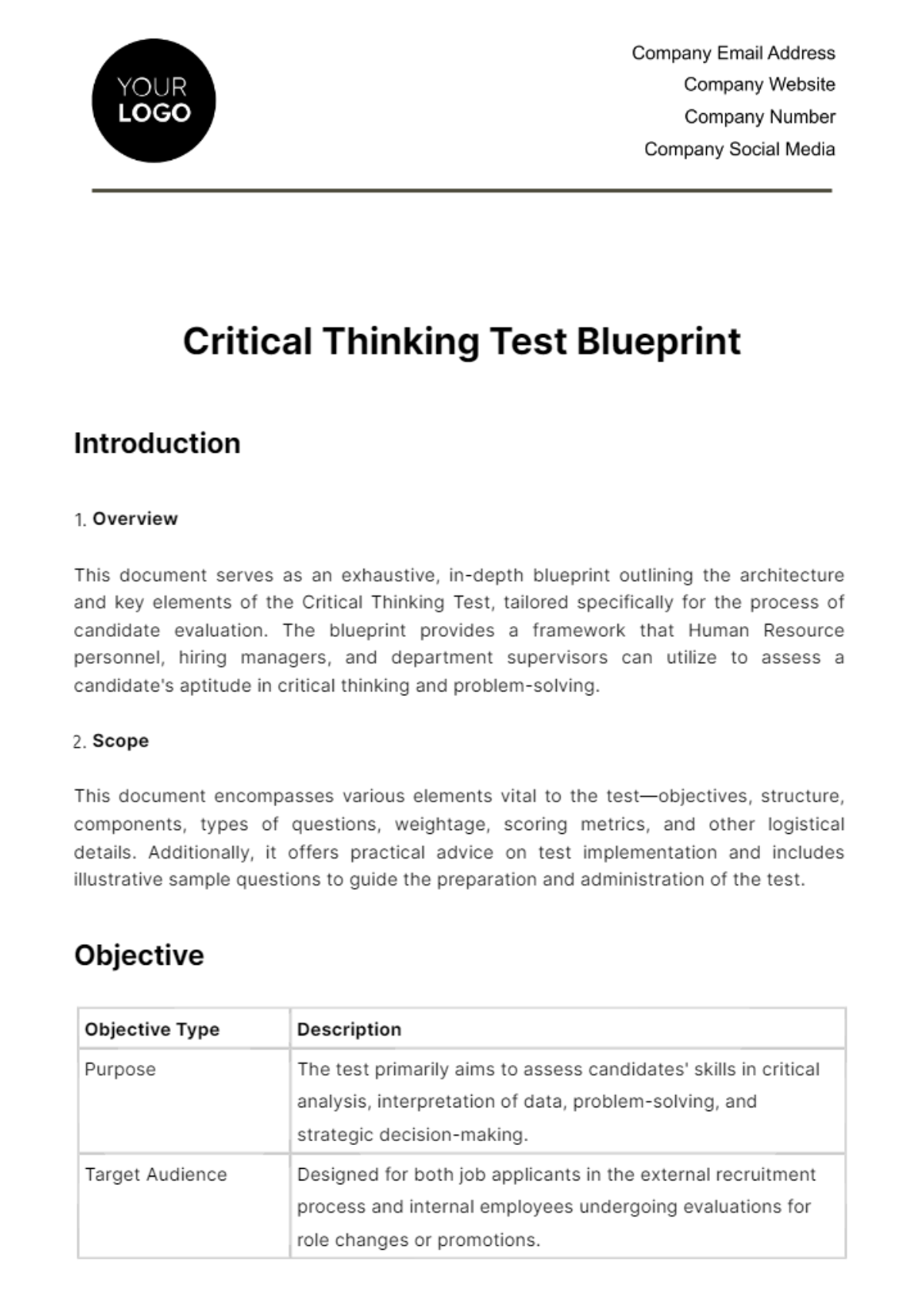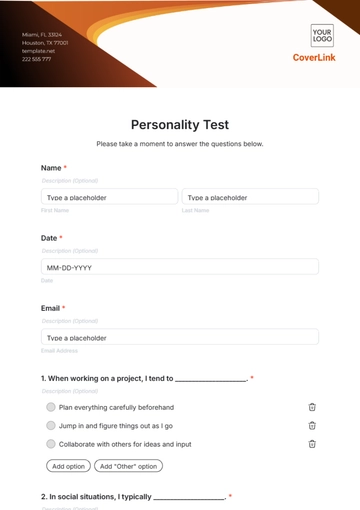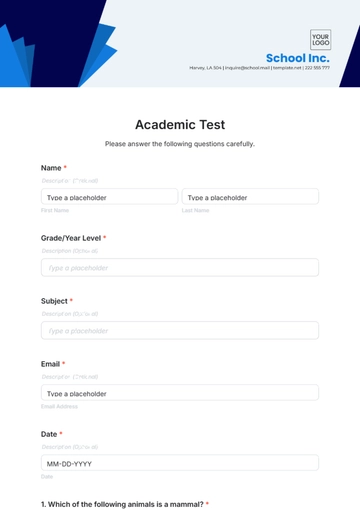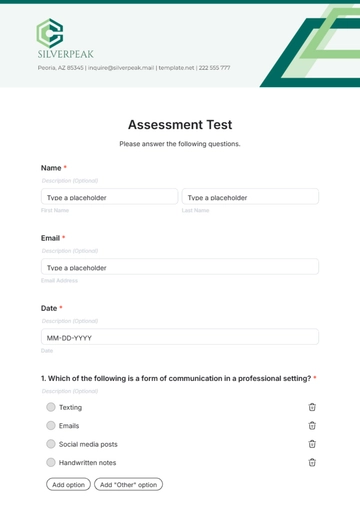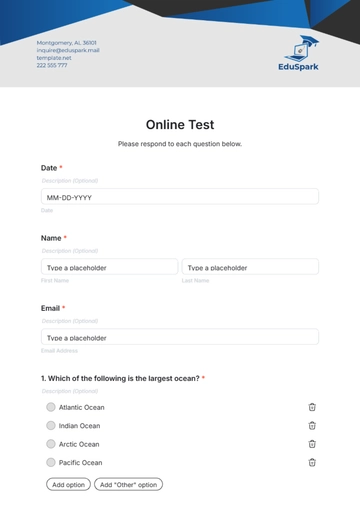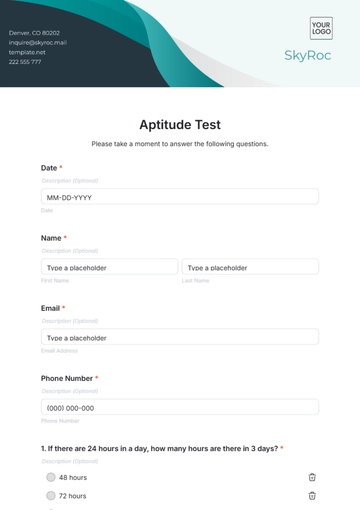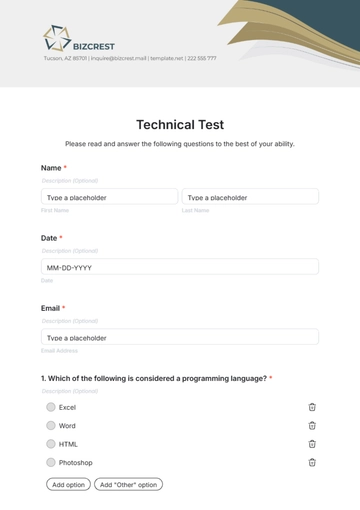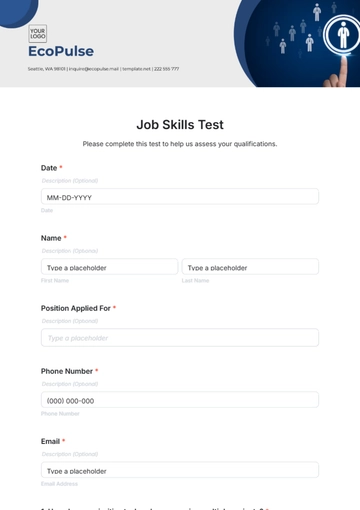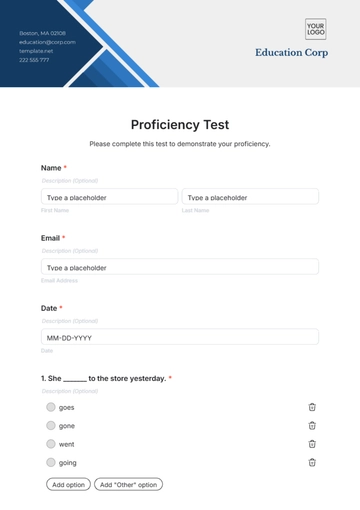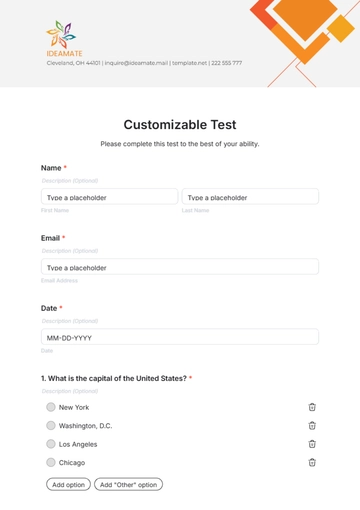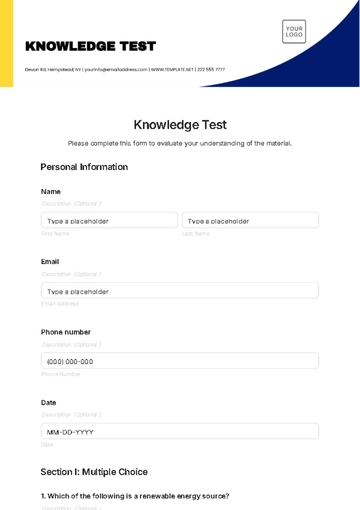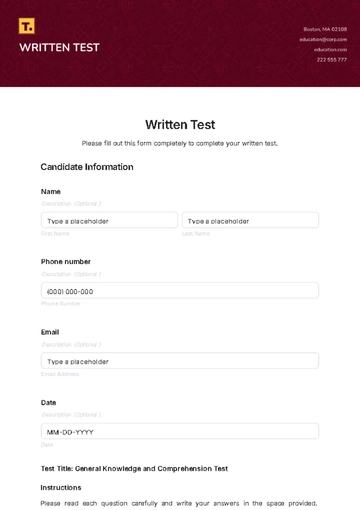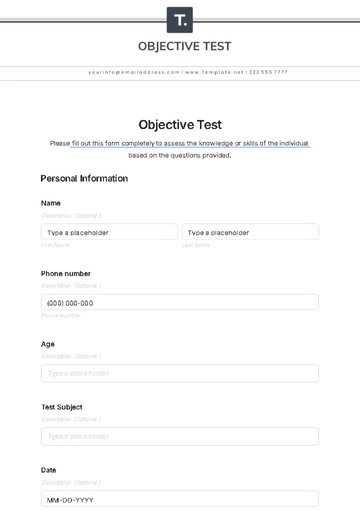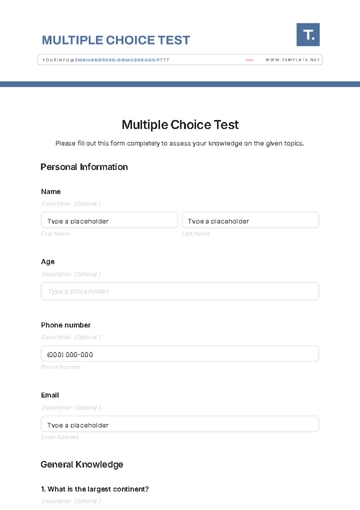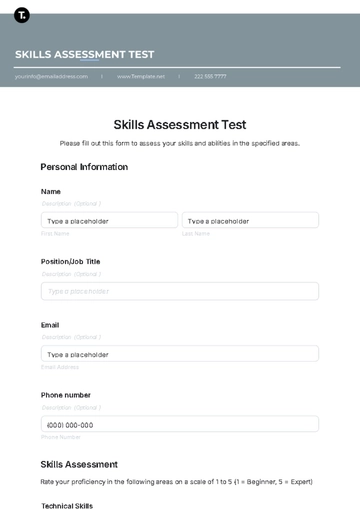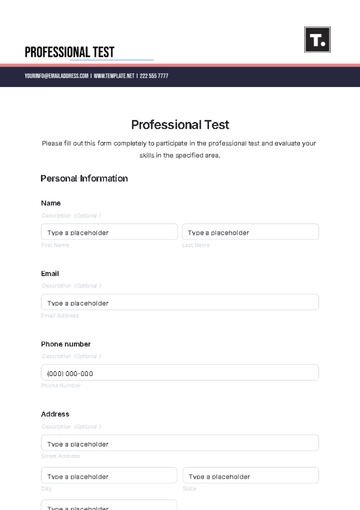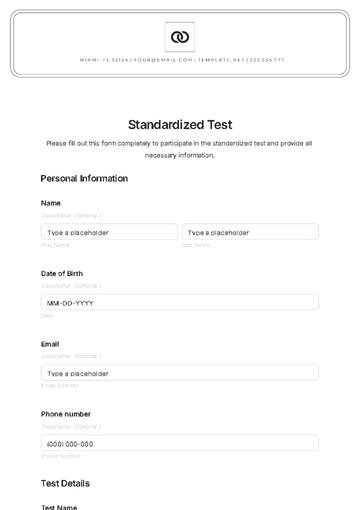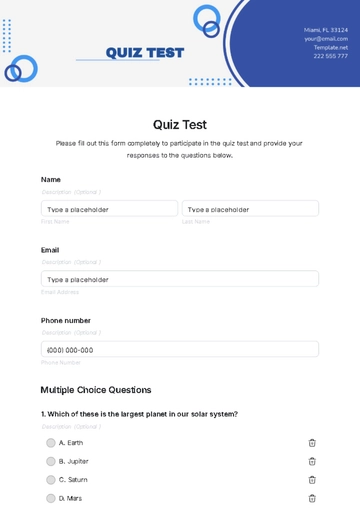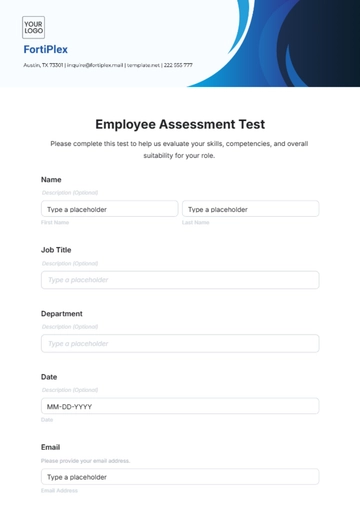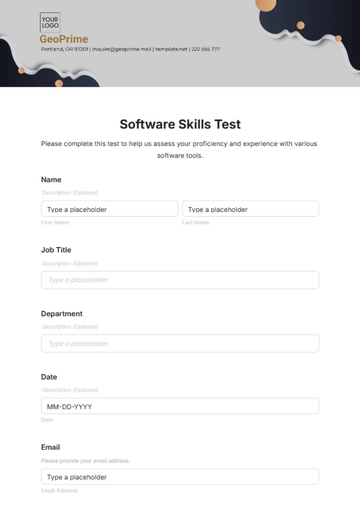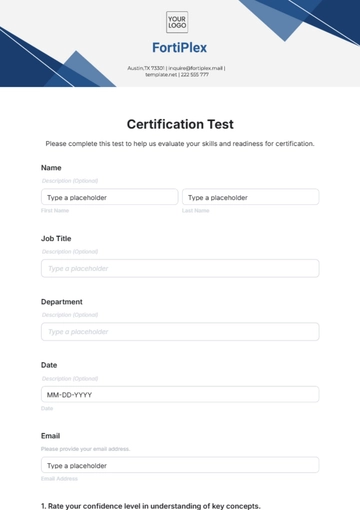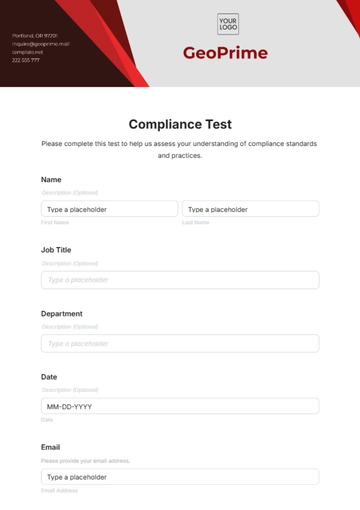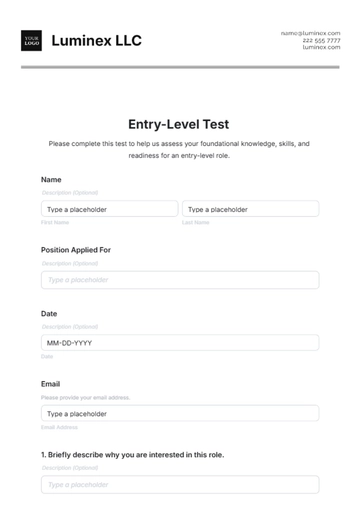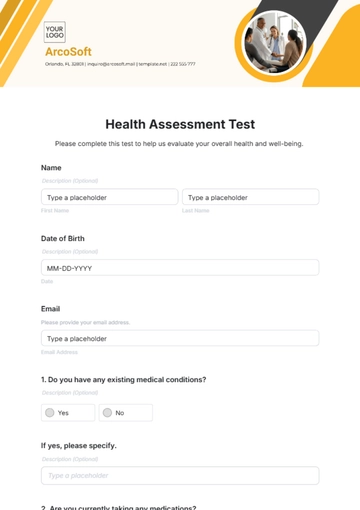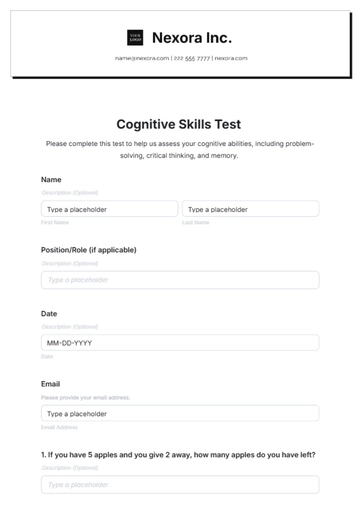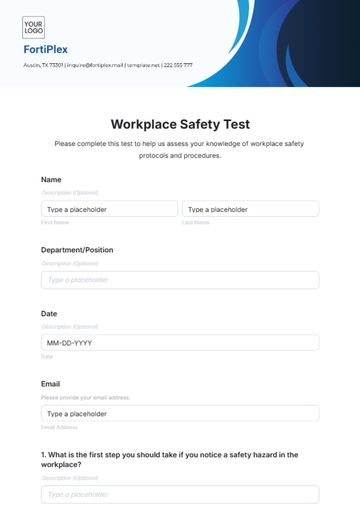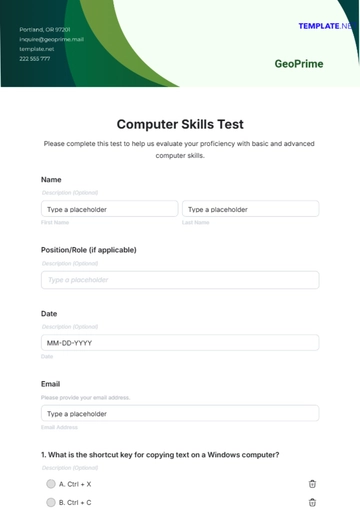Critical Thinking Test Blueprint
Introduction
Overview
This document serves as an exhaustive, in-depth blueprint outlining the architecture and key elements of the Critical Thinking Test, tailored specifically for the process of candidate evaluation. The blueprint provides a framework that Human Resource personnel, hiring managers, and department supervisors can utilize to assess a candidate's aptitude in critical thinking and problem-solving.
Scope
This document encompasses various elements vital to the test—objectives, structure, components, types of questions, weightage, scoring metrics, and other logistical details. Additionally, it offers practical advice on test implementation and includes illustrative sample questions to guide the preparation and administration of the test.
Objective
Objective Type | Description |
Purpose | The test primarily aims to assess candidates' skills in critical analysis, interpretation of data, problem-solving, and strategic decision-making. |
Target Audience | Designed for both job applicants in the external recruitment process and internal employees undergoing evaluations for role changes or promotions. |
Purpose and Goals
Critical Analysis: To measure the capacity of candidates to scrutinize and evaluate complex situations or problems.
Data Interpretation: To assess how well candidates can read, understand, and make data-driven decisions.
Problem-Solving: To judge the ability to identify issues and implement effective solutions.
Strategic Decision Making: To evaluate the skill to make well-informed decisions under various circumstances.
Target Audience Description
External Candidates: Candidates applying for roles requiring advanced cognitive abilities.
Internal Candidates: Existing employees who are either up for promotion or considering a shift in roles that necessitate advanced thinking skills.
Test Structure
Structure Element | Details |
Time Allocation | 60-minute total |
Format | Online/Paper-based, Proctored/Unproctored |
Time Allocation Details
Format Variants
Online Format: Suitable for remote testing. Enables quick scoring and analytics.
Paper-Based Format: Useful for localized testing environments.
Proctored vs. Unproctored: Proctoring may be necessary for high-stakes roles.
Test Components
Component | No. of Questions | Time Allotted | Weightage (%) |
Multiple-Choice Questions | 20 | 30 minutes | 40 |
Scenario-Based Questions | 5 | 20 minutes | 35 |
Essay | 1 | 10 minutes | 25 |
Explanation of Components
Multiple-Choice Questions: Evaluate comprehension and interpretative skills.
Scenario-Based Questions: Assess practical problem-solving and decision-making.
Essay: Measure articulation, reasoning, and synthesis skills.
Question Types
Multiple-Choice Questions
Aspect | Explanation |
Understanding | Gauge comprehension of core concepts. |
Interpretation | Assess ability to make sense of data and text. |
Scenario-Based Questions
Aspect | Explanation |
Application | Test practical application of concepts. |
Problem-Solving | Evaluate skill in issue identification and resolution. |
Essay
Aspect | Explanation |
Articulation | Examine clarity in conveying thoughts. |
Reasoning | Evaluate the quality of logical arguments. |
Synthesis | Assess the skill to amalgamate diverse elements into a cohesive whole. |
Weightage
Component | Weightage (%) |
Multiple-Choice Questions | 40 |
Scenario-Based Questions | 35 |
Essay | 25 |
Scoring Metrics
Criteria | Weight (%) | Description |
Accuracy | 30 | Correctness of answers |
Relevance | 25 | Suitability of responses to the question |
Coherence | 25 | Logical consistency and flow |
Originality | 20 | Novelty in problem-solving or argumentation |
Implementation Guidelines
Guideline | Description |
Test Environment | Quiet and free from distractions |
Use of External Resources | Not permitted unless specified |
Sample Questions
Multiple-Choice Sample
Q: Which is an example of cognitive bias?
Options: Confirmation bias, Critical thinking, Cognitive dissonance, Analytical reasoning
Scenario-Based Sample
Q: You are a manager with a tight deadline. How do you prioritize your tasks?
Essay Sample
Q: Discuss the role of critical thinking in effective decision-making.
Evaluation Criteria
Evaluation Type | Measures |
Multiple-Choice and Scenario | Accuracy, relevance, and coherence |
Essay | Articulation, reasoning, coherence, and originality |
Review and Revision
Review Element | Frequency | Description |
Content Relevance | Annually | Ensure the content remains up-to-date |
Test Effectiveness | Bi-Annually | Evaluate if the test meets its objectives |
For further clarifications or queries regarding this blueprint, feel free to contact the Human Resources Department
HR Manager: [Your Name]
Email: [Your Email Address]
Phone: [Your Phone Number]
HR Templates @ Template.Net
